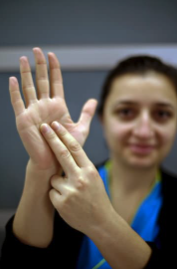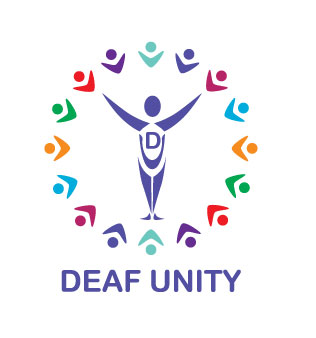Did you enjoy #InternationalWeekOfDeafPeople and the associated spotlight on signed languages around the world? What about the CODA movie from America, or the new Marvel movie with a deaf superhero – Lauren Ridloff? There has been a lot of buzz about signed languages just recently, and a renewed interest in learning British Sign Language (BSL) in the UK.
According to the Bristol Post:
‘Analysis of Google search data over the past week, conducted by CasinoGrounds.com, found that UK searches for the phrase “sign language” increased by a whopping 488 per cent after Rose and Giovanni’s performance on Saturday (October 23). Searches for ‘learn sign language’ rose by 1,011 per cent from 5pm to 8pm on Saturday, whilst Strictly was on air. Meanwhile the abbreviation for British Sign Language – ‘BSL’- saw a 221 per cent increase in search volume after Rose and Giovanni performed the Viennese Waltz, which saw the pair bag their first 10 of the series.’

The Facts
As with all things nowadays, self-learning and online resources abound, but you have to always check your sources. Misinformation, social journalism and repetitions of old tropes can take well-meaning people’s time and energy down a rabbit-hole of wasted efforts. So, we thought we would take the time to clarify a few things around deafness and BSL and give some tips about learning it.
Deafness and The Community
In 2017 we featured this article debunking 8 of the top myths around deafness – take a look! What is important to note is that deafness is different for everyone: whether you are born deaf; become deaf; had access to language early on; or had some hearing that could be used to learn English or to speak. None is better than the other – everyone’s experience and journey is valid.
You may have seen Rose signing and talking on Strictly. It is important to note that not all deaf people can speak and not all deaf people can sign. Even if they can, they may choose not to, depending on the situation or the need.
It used to be common to see people classifying people into ‘big-D’ and ‘little-D’ deaf, i.e, whether someone identifies as a member of the deaf community or not and whether they use sign language as their preferred method of communication. This has come full circle in 2021, with many seeing it as divisive. As you can see from this article and many others on our site, these labels can cause many deaf people to feel they have to earn their place in the ‘Community’ or prove themselves to others. The deaf community has been working from within to break down these ‘barriers to entry’ and reshape the community as a space that welcomes all.
Sign up to our newsletter for more content like thisSigned Language
You might see people using this phrase more – ‘signed language’ – nowadays, instead of ‘sign language’. The reason for this is that many people hear/see the phrase ‘sign language’ and see it as singular, understanding that there is only ONE ‘sign language’ for the world. Yet, as the UN recognised, the World Federation of the Deaf identify ‘more than 300 different sign languages’ globally!
It is correct to capitalise a national signed language, like British Sign Language, but when talking about signed vs spoken language, there is no need and we use the term ‘signed’. It takes some getting used to but the reasoning is solid.

Learning Signed Language
Now we get to the meat of the topic – what to do if you want to learn a signed language. The introduction of this article shows that people are heading to the Internet to search out how to learn, and most want a video, an online course or a book where they can learn.
One of the beautiful things about signed languages is that they are visual-gestural: the signs are formed by moving the hands in space and using one’s body and face to add meaning to the signs, all in a 3D layered picture. A stick drawing or a picture of signs just doesn’t do it justice and usually leads to the wrong articulation of the signs and a breakdown in communication.
It is best to learn from a video or even better a real person! In the pandemic, many sign language courses went virtual – teaching through Zoom and other platforms – opening up the opportunity to learn to so many more people.
Deaf Unity provide sign language courses – why not take a look. There are lots of other providers too – do your homework and find one that is right for you.
Who To Learn From
A Google search for BSL will turn up lots of results with people offering to teach a sign language. Some might be free, some might offer ridiculously cheap prices and others might seem way too expensive for something as ‘simple’ as learning a sign language.
The first thing to realise is that any signed language is a real language. You didn’t learn French at school in 2 weeks or Mandarin in 5 days for free. Signed languages are rich and full languages that need to be studied and understood. It is a distinct language from English, so there isn’t a sign for every word. Each sign is laced with linguistic and cultural elements that need to be learned.

The next thing is what course to choose. We wrote an article on this discussing whether to pay or not. At the end of the day, the old adage rings true – you get what you pay for. Sure you can learn from a book or from a free course online, but you run a risk. The risk of learning the wrong things and wasting your good intentions and time.
Another contentious topic is who should be teaching sign language. Deaf people feel strongly that they should be the only ones allowed to teach sign languages. The reasons are deep and borne out of a lot of struggles through history. If you think about it, who would you prefer to learn from: a native or someone who learned themselves? Your French or German teacher at school may not have been a native speaker and that ‘wasn’t a problem’. But have you had the experience of going to those countries and people saying: ‘we don’t speak like that in real life’? It’s the same with sign languages – a person who isn’t deaf can teach what they have learned, sure, but they will teach you from the ‘books’ not from ‘their life’. They won’t be able to teach you about the culture of deafness or show you how people ‘really’ sign something.
What is important is that whether you teacher is deaf or hearing (choose deaf!), they are qualified to teach! That means being qualified to sign (Level 6 – degree level fluency) and they are qualified to teach (a recognised teaching qualification). You will be paying a lot of money to learn the levels of sign language – you deserve a qualified and capable teacher!
If you aren’t ready for a course, why not take your first step and learn the dance that Rose and Giovanni did!
End of the Day
All in all, we love the renewed attention on the language and the culture of deaf people. We just encourage you to realise that you are stepping into not only a language, but a culture, community and history too.
Welcome!
Looking for more support? We’ve made it our mission to improve the lives of deaf people everywhere. Check out Deaf Unity’s projects to find out what we can do for you. If you’d like to get in touch, contact us here.

